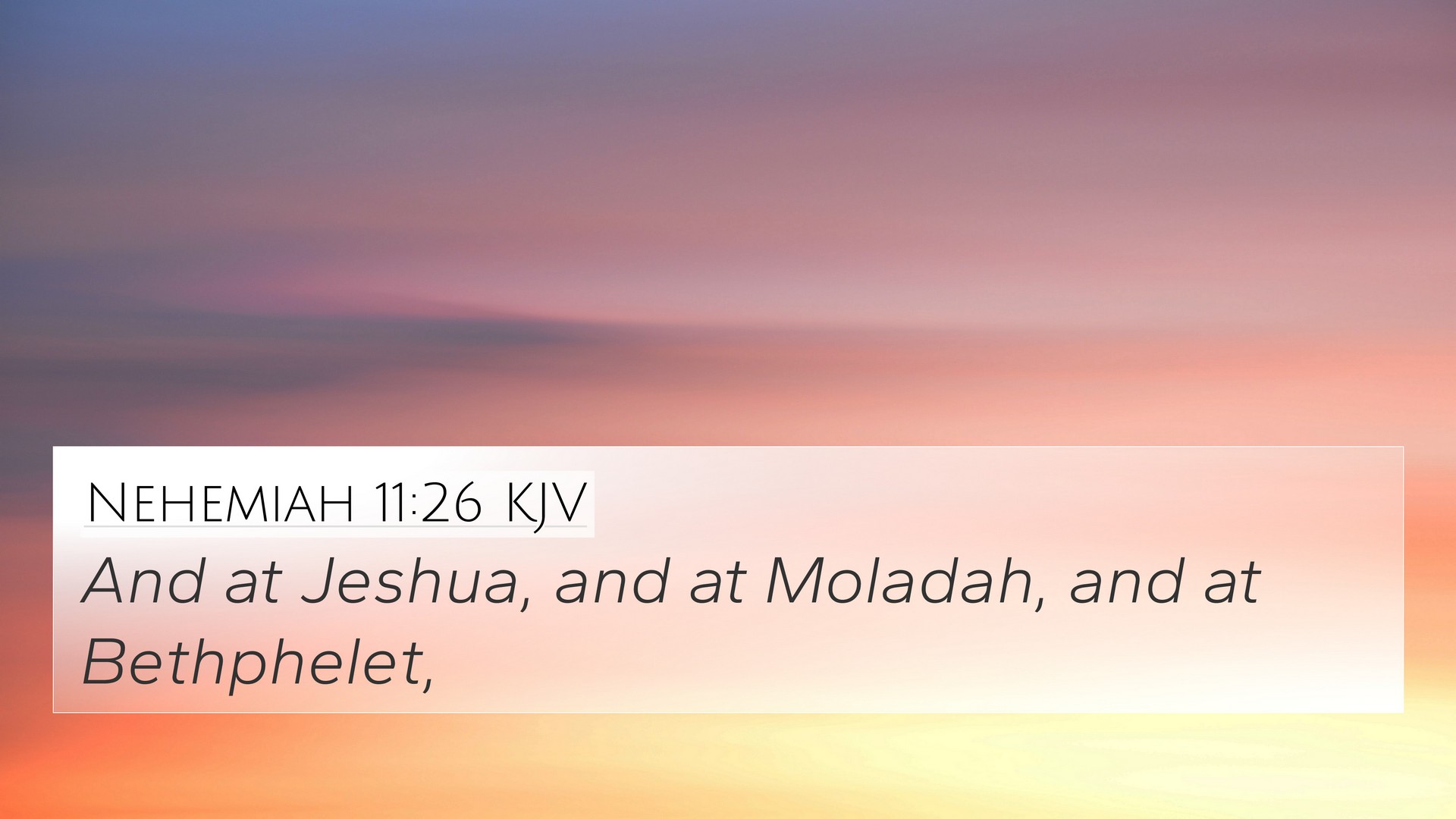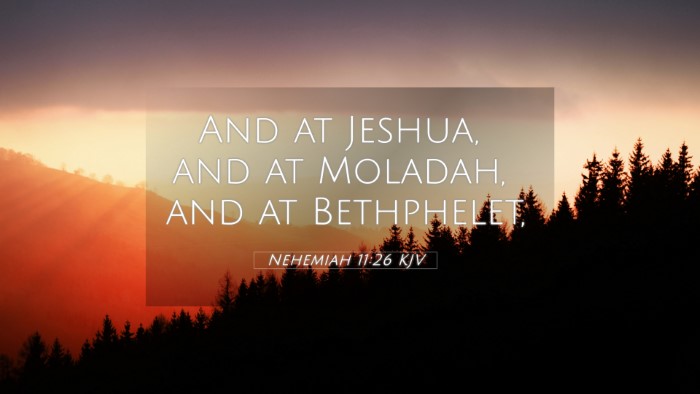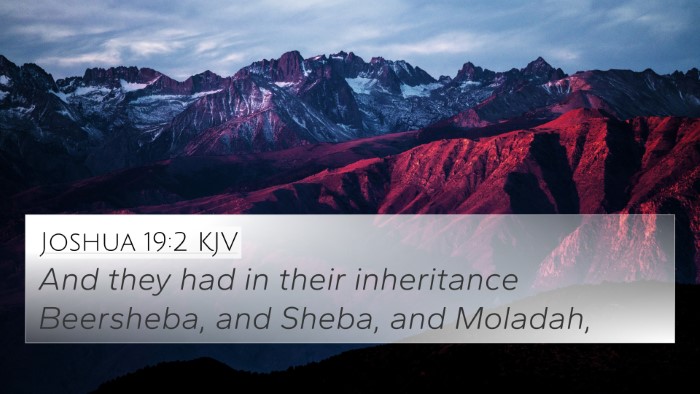Understanding Nehemiah 11:26
Nehemiah 11:26 states: "And in Jerusalem dwelt certain of the children of Judah, and of the children of Benjamin. And of the children of Judah; Athaiah the son of Uzziah, the son of Zechariah, the son of Amariah, the son of Shephatiah, the son of Mahalalel, of the children of Perez." This verse highlights the importance of community and the specific families that resettled in Jerusalem following the Babylonian exile. To fully grasp its significance, we can look at insights from various public domain commentaries.
Commentary Insights
-
Matthew Henry:
Henry emphasizes the importance of the individuals mentioned, noting how their lineage establishes a connection to the heritage of Israel. He observes that their presence in Jerusalem signifies a restoration of the city and a recommitment to their ancestral homes. The naming of specific individuals illustrates the return to a covenant community.
-
Albert Barnes:
Barnes remarks on the significance of Judah and Benjamin in this context, highlighting their roles as the primary tribes that maintained loyalty to the Davidic line. He notes that the names listed in this passage show the continuity of God's promises through these families, thus reinforcing the thematic connections between the restoration of Israel and divine faithfulness.
-
Adam Clarke:
Clarke provides a detailed look at the genealogies presented in this verse. He stresses that the names serve not only as historical reference but also as a means of linking past and present. By naming these families, Clarke points out that it serves as a testament to God’s providence in reestablishing His people in their land.
Key Themes and Connections
This verse is interconnected with several important themes and can be analyzed alongside related Bible verses that provide further context:
-
Restoration: The rebuilding of Jerusalem as a symbol of hope and renewal.
Cross Reference: Isaiah 44:26
-
Genealogy: The significance of family lineage in establishing identity and heritage.
Cross Reference: Matthew 1:2-16
-
The Covenant: The reaffirmation of God's promises to the descendants of Israel.
Cross Reference: Jeremiah 31:31-34
-
Community: The importance of living in community as a reflection of faith.
Cross Reference: Acts 2:44-47
-
Faithfulness: God's faithfulness to His people despite their exile.
Cross Reference: Lamentations 3:22-23
-
Hope and Restoration: The prophecy of restoration being fulfilled.
Cross Reference: Ezekiel 37:21-22
-
Leadership: The role of leadership in rebuilding the nation.
Cross Reference: Nehemiah 2:17
Cross-Referencing Biblical Texts
Cross-referencing Nehemiah 11:26 with these verses not only sheds light on its individual meaning but also highlights connections between various scriptures throughout the Bible:
- Genesis 49:8-12 - The prophecy concerning Judah.
- Zechariah 8:3 - The promise of Jerusalem as a city of truth.
- Hebrews 11:10 - The faith of the patriarchs in the promised land.
In studying Nehemiah 11:26 and its related verses, we can appreciate the layered meanings within the text and the interconnectedness of Biblical themes. Using tools for cross-referencing, such as a Bible concordance or a cross-reference Bible study guide, can enhance your study and understanding of these verses. Understanding how Nehemiah's time relates to other historical and prophetic texts allows us to better see God’s overarching narrative throughout scripture.
Conclusion
The analysis of Nehemiah 11:26 reveals the depth of scripture that lies in genealogical records and the significance of community restoration. Connecting this verse with others helps illuminate the narrative of God’s covenantal relationship with His people, underscoring the themes of hope, identity, and divine faithfulness.
Additional Resources for Cross-Referencing
For those interested in deepening their understanding, consider exploring:
- Bible reference resources that provide comprehensive analysis.
- Methods for cross-referencing Bible studies to enrich your biblical knowledge.
- Identifying connections between Old and New Testament themes.




